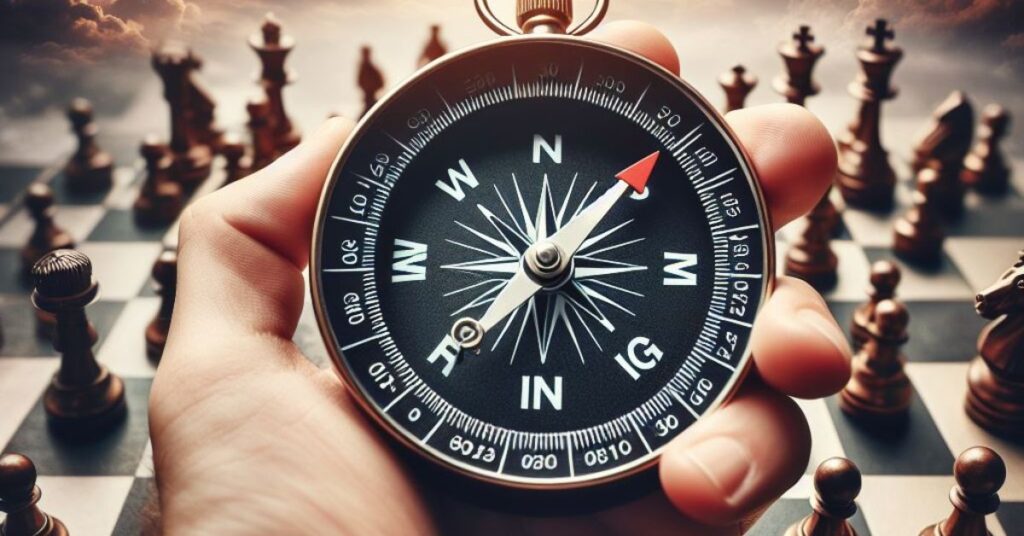I was with Daniel Pieper at the “Futureproofing your career” webinar on Tuesday. Daniel is the former CIO of Hoolah, a fintech startup acquired by ShopBack a few years ago. His entrepreneurship journey began even before he graduated from university and he had to defer his studies to be the full-time CEO of his own company.
At various times in his life, someone knocked on his door with a random opportunity, and Daniel jumped on board, sometimes throwing in all his savings, and a new venture began. He worked and studied in many countries, and kept building new experiences, connections, and opportunities.

This is not a “take more risks, you will get more success” story. Daniel admitted to only taking affordable risks in each specific situation. His minimalist lifestyle in the past also allowed him to take bigger financial risks. The intriguing thing is he has a system that wins.
“I don’t plan, because whenever I have a bit more idea about what I want to do, things turn out the other way,” Daniel says.
Daniel didn’t plan for outcomes. Guiding his decisions was his interest in entrepreneurship, new experiences, Asia, banking, and fintech. Meanwhile, he kept his antennas highly attuned to trends.
Shall we call those “visions?” There is a trap in “vision”: vision sometimes gets confused with outcome. I would like to call that “big-picture visioning” without details or specific outcomes.
Visions are potentially useful. This outcome-first mindset is a signature of the manufacturing era where everything could be planned and executed in waterfall charts. Many executives I coached like to fix a goal and work backward.
But we live in an increasingly uncertain world that is disrupting itself every second. It is becoming harder and harder to plan, or even to imagine. This is exactly how agile philosophy was invented. It’s just that we have yet to apply it to our life and career planning.
Beyond the practicality that we cannot imagine the future, there are more reasons why we should not focus on outcomes.
This ONE Idea
“Thinking abt a goal, you are failing everyday.
But in a system, you are succeeding every moment.
Systems are much more powerful way of interacting with the world.”
Adam Alter, Big Think
There is something very unsatisfying about reaching the goal post, we find it anticlimax and need to go and find sth new.“ Check this insightful video to learn more.
I. The hideous manifestations of an outcome-first mindset
It’s not that I want to point my fingers at an outcome-first mindset for everything. It’s just so often that we find it under many stones we turn. Name a few:
Self-censorship: If you find yourself holding back from expressing opinions that aren’t assured success, it might be because of your anticipation of criticism on outcomes – will others agree or challenge your ideas? And self-censorship is costly. Not only does your career suffer from a lack of visibility, but you will also miss an opportunity to contribute and make an impact.
Reluctance to experiment: When we are overly cautious of a negative outcome, we may take a long time before taking action or experimenting with approaches. This usually shows up as excessive worrying, and procrastination even when the material downside is ignorable. One such example is saying “what’s the point? It won’t work anyway.” Read more on What’s the point.
Lack of empathy in leadership: Leaders entrenched in outcome-first thinking may prioritize results over people, overlooking the creativity and effort of their teams if the end results aren’t flawless. This can demoralize employees, feeling undervalued and misunderstood.
Stress and challenges in decision-making: The self-narrative of “I cannot fail. I want the decision that will give me the best outcome” often is a recipe for stress, indecisiveness, or second-guessing our decisions. By focusing on the outcome, something we have no control of, we forget to ground ourselves in what we indeed know and can control.
The alternative? A learning mindset. This approach embraces trials and errors, values the process over the product, and sees ‘failure’ as a necessary step towards innovation. When we shift from an outcome-first to a learning-first approach, we open up new possibilities for creativity, collaboration, and ultimately, more meaningful successes.
II. Refine your system
For most of us, this outcome-first mindset still manifests in some areas in the system. Our operating system is more than routines or habits; it consists of thought and emotional patterns that keep churning out feelings, thoughts, and behaviors. Refining our system can dramatically increase our capacity to be effective.
The key to refining is reflection, a deep dive into our internal operating systems—examining our behavior patterns, the biases we harbor, and the decision-making processes we follow. Broadly, we need to reflect and gain a deep awareness of several core areas:
- Emotional Awareness: Consider A, who struggled with complex emotions during high-pressure meetings. In my coaching sessions, A learned to recognize the early signs of stress and body signals. We then implemented new techniques to manage their reactions. This shift didn’t just calm him; it transformed his team’s dynamics, turning tense meetings into productive discussions.
- Thought Pattern Awareness: Client B often fell into a ‘catastrophizing’ mindset, expecting the worst-case scenario in every work challenge. And then B would spiral into a fear for job stability + self-blame mode. By identifying this pattern, we worked on uncovering the assumptions under this pattern, restructuring her thought processes toward positive intelligence.
- Decision-Making Patterns: Client C consistently made rapid decisions, which sometimes led to oversights. Through reflective exercises, she realized the need for a more balanced approach. She wanted a ‘pause and ponder’ step in her decision-making process, in order to assess more information and consult other stakeholders before finalizing decisions. We worked on her systemic awareness, through which she realized the deep interdependency she had with others in her family and work circles.
- Behavioral Patterns in Interpersonal Dynamics: Client D had a habit of dominating conversations, which prompted some of his colleagues to complain about him. Through training him on influencing style, D became more aware of his behavioral patterns, and learned to facilitate rather than control discussions, leading to richer, more collaborative team interactions.
- Cultivating Group Dynamics: During sessions with Client E’s team, it became evident that some members felt undervalued. E learned that it was his tendency to focus on what was yet to be delivered, than to acknowledge the achievement and the effort and innovative solutions created. We introduced regular ‘recognition rounds’ at the end of meetings where team members could acknowledge each other’s contributions. This practice not only improved morale but also encouraged a more supportive team culture.
These are just examples in our complex and intricate human inner world. Each person’s journey is unique. This is why self-reflection and working with a coach on a tailored journey are important ways to improve the system.
III. Practical Tips for System Enhancement
Vagus Nerve Exercises (or Grounding Exercise): When I feel stressed or notice that my breaths are shallow, I tune into my senses. This is no meditation stuff – we can’t meditate if there are another five human beings around us talking. But we can deliberately engage each sense to activate our sympathetic nervous system (in layman terms, to relax)
Below are the exercises you can do any time, anywhere.
- Hear sounds in the room and sounds from far away. There are a lot of background noises that we “auto-cancel” when we focus on the sound in the foreground. Bring the background sounds into your consciousness as well. Hear the sound of someone typing on a keypad. Hear your own breathing and heart beat. Hear the traffic from far away. This is my favourite technique.
- See colors or movements. Find colors in the space you are in. It could be the colors of the table, the wall, or the sky outside the window. If you must look at someone’s face, notice how the facial muscles move (without making sense of it about the person, such as whether he/she is pleased or not).
- Smell.
- Rub your thumb and index finger of one hand. Feel the friction between the textures on both fingers. You can do it under the table without anyone noticing.
- Feel the wind or breeze on your skin.
- Feel the weight of your feet on the ground. Feel the support from the ground.
Navigating uncertainty in today’s world requires a shift from a rigid goal-focused approach to a flexible system-oriented mindset. By refining our internal systems and becoming more aware of our mental and emotional processes, we can better adapt to change and face the future with confidence.
Question For You
Which areas in life do you still hold an outcome-first mentality? How is it helping and not helping you?


